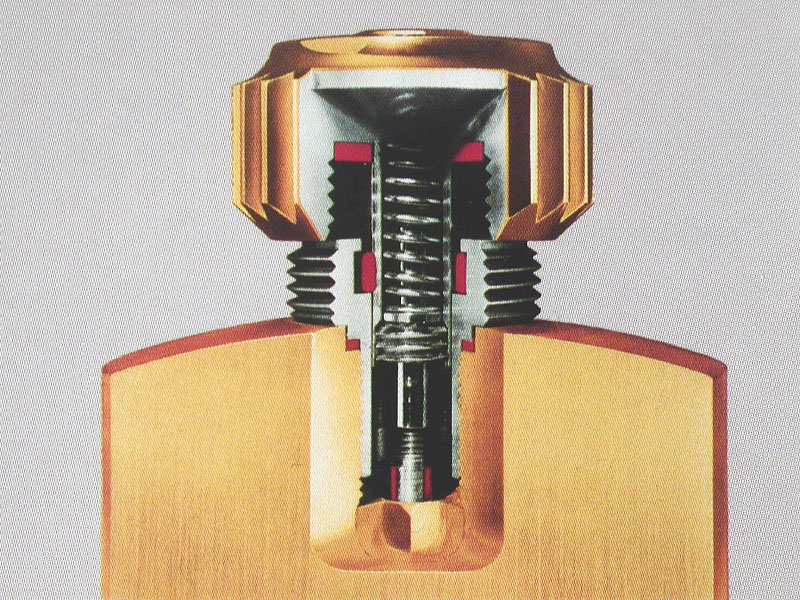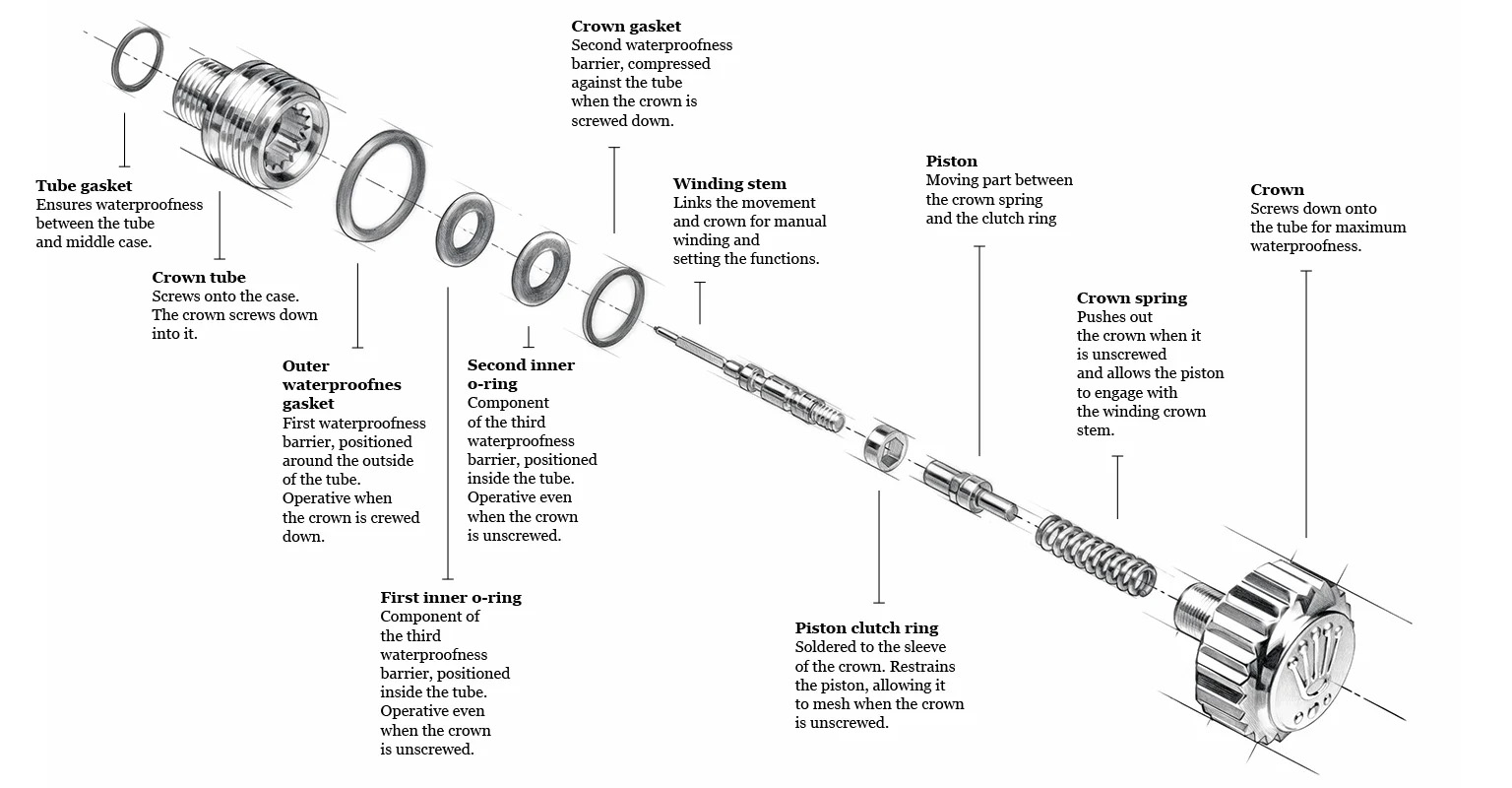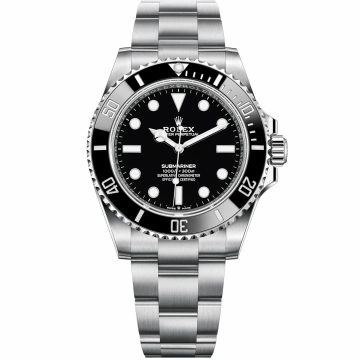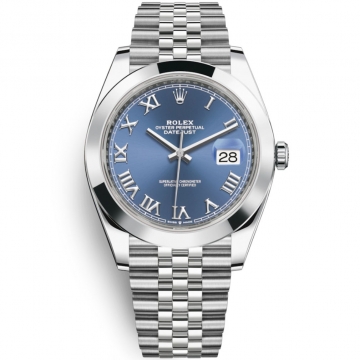Crown Twinlock vs Triplock
One of the foundations of the historical popularity of Rolex watches is their water resistance. As you may already know, in 1926, Rolex introduced the world's first waterproof watch, which the company called the Oyster. The Oyster case's ability to keep water out of the movement is due in part to its screw-down crown. The Rolex patented waterproof system included a crown with a metal gasket that screwed into a tube (futor) inside the watch case. This mechanism allowed the compressed gasket to form a watertight barrier to water, which was revolutionary in those years.

The crown design was refined by Rolex engineers over the next several decades, until the Rolex Submariner was introduced in 1953. Since the Submariner was designed as a diving watch, Rolex needed to radically improve its water resistance. To this end, Rolex has invented the Twinlock crown with two o-rings made of synthetic materials, instead of the former single metal gasket. This essentially creates two sealed zones.

Rolex
Twinlock
Similar to the design of the first screw-down crown, the Twinlock system also includes a single o-ring inside the crown, which, when screwed down, presses against the crown and creates a barrier to protect the watch from external moisture. However, a second O-ring (hence the "Twin") was located inside the foot and crimped the winding shaft to keep water out, even with a loose crown. Although, if the head is not screwed down, then the water resistance is significantly lower than the declared characteristics.
The Twinlock system is now used in many Rolex watches and is marked on the crown with either a band or one or two dots below the crown. For example, two dots on white gold models, one dot on platinum models and a band on yellow gold or steel watches. However, this mark only applies to current Rolex models. Older Rolex models had different designations, such as a band for steel and yellow gold and two dots for white gold.

Logo Rolex Twinlock
In 1970, Rolex launched its third generation crown, the Triplock. As the name suggests, the Triplock version has three sealed zones and debuted in the Sea-Dweller diving watch. An additional O-ring has been added to crimp the shaft. Now at once two O-rings are located inside the foot, and the third remains under the crown and finally “battens down” the watch case when the crown is screwed in.

Less than ten years later, in 1977, Rolex fitted the Submariner collection with a Triplock crown, and today all Rolex diving watches (Submariner, Sea-Dweller and Deepsea) include this option. The Submariner is water-resistant to 300 meters, the Sea-Dweller to 1220 meters and the Deepsea to 3900 meters.
The Triplock logo on the crown looks like three dots below the crown. Steel models have three dots of the same size, gold models have an enlarged center point, and platinum models have a reduced center point.

Logo Rolex Triplock
In addition to diving watches, Rolex uses the Triplock crown on several other Professional models. For example, the Daytona at the beginning of its history was produced with a Twinlock crown, and then in 1972 the model was modernized. As a result, the Daytona after 1972 was fitted with a Triplock head.
Likewise, when Rolex launched the new GMT-Master II with ceramic bezels in 2007, Triplock crowns were incorporated to replace the previous Twinlocks. The Yacht-Master 40 and Yacht-Master II are also equipped with Triplock.
At the same time, despite the presence of the Triplock crown, the Daytona, GMT-Master II and Yacht-Master I / II watches are only 100 meters water-resistant.
Other Rolex models - Datejust, Day-Date, Oyster Perpetual, Sky-Dweller, Milgauss, Explorer I / II and others have Twinlock crowns and are also water resistant to 100m.
The next time you use the crown to set the time or date on your Rolex watch, you will know a little more about all the research and development that went into this small but important device.
One of the foundations of the historical popularity of Rolex watches is their water resistance. As you may already know, in 1926, Rolex introduced the world's first waterproof watch, which the company called the Oyster. The Oyster case's ability to keep water out of the movement is due in part to its screw-down crown. The Rolex patented waterproof system included a crown with a metal gasket that screwed into a tube (futor) inside the watch case. This mechanism allowed the compressed gasket to form a watertight barrier to water, which was revolutionary in those years.

The crown design was refined by Rolex engineers over the next several decades, until the Rolex Submariner was introduced in 1953. Since the Submariner was designed as a diving watch, Rolex needed to radically improve its water resistance. To this end, Rolex has invented the Twinlock crown with two o-rings made of synthetic materials, instead of the former single metal gasket. This essentially creates two sealed zones.

Rolex Twinlock
Similar to the design of the first screw-down crown, the Twinlock system also includes a single o-ring inside the crown, which, when screwed down, presses against the crown and creates a barrier to protect the watch from external moisture. However, a second O-ring (hence the "Twin") was located inside the foot and crimped the winding shaft to keep water out, even with a loose crown. Although, if the head is not screwed down, then the water resistance is significantly lower than the declared characteristics.
The Twinlock system is now used in many Rolex watches and is marked on the crown with either a band or one or two dots below the crown. For example, two dots on white gold models, one dot on platinum models and a band on yellow gold or steel watches. However, this mark only applies to current Rolex models. Older Rolex models had different designations, such as a band for steel and yellow gold and two dots for white gold.

Logo Rolex Twinlock
In 1970, Rolex launched its third generation crown, the Triplock. As the name suggests, the Triplock version has three sealed zones and debuted in the Sea-Dweller diving watch. An additional O-ring has been added to crimp the shaft. Now at once two O-rings are located inside the foot, and the third remains under the crown and finally “battens down” the watch case when the crown is screwed in.

Less than ten years later, in 1977, Rolex fitted the Submariner collection with a Triplock crown, and today all Rolex diving watches (Submariner, Sea-Dweller and Deepsea) include this option. The Submariner is water-resistant to 300 meters, the Sea-Dweller to 1220 meters and the Deepsea to 3900 meters.
The Triplock logo on the crown looks like three dots below the crown. Steel models have three dots of the same size, gold models have an enlarged center point, and platinum models have a reduced center point.

Logo Rolex Triplock
In addition to diving watches, Rolex uses the Triplock crown on several other Professional models. For example, the Daytona at the beginning of its history was produced with a Twinlock crown, and then in 1972 the model was modernized. As a result, the Daytona after 1972 was fitted with a Triplock head.
Likewise, when Rolex launched the new GMT-Master II with ceramic bezels in 2007, Triplock crowns were incorporated to replace the previous Twinlocks. The Yacht-Master 40 and Yacht-Master II are also equipped with Triplock.
At the same time, despite the presence of the Triplock crown, the Daytona, GMT-Master II and Yacht-Master I / II watches are only 100 meters water-resistant.
Other Rolex models - Datejust, Day-Date, Oyster Perpetual, Sky-Dweller, Milgauss, Explorer I / II and others have Twinlock crowns and are also water resistant to 100m.
The next time you use the crown to set the time or date on your Rolex watch, you will know a little more about all the research and development that went into this small but important device.






